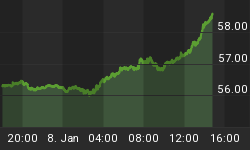The following is part of Pivotal Events that was published for our subscribers December 18, 2014.
This time of year as the days are getting darker and colder, it is easy to transport one's imagination to Stonehenge thousands of years ago. There in the Salisbury Plain and surrounding area, subsistence living in mud and wattle hovels would be growing bleaker every day. But over the centuries there must have been enough taxation for a statereligion to build the magnificent structures of Stonehenge. As well as maintain the bureaucracy that went with it.
Julius Caesar provided the first written account of the Druids and he noted that the priesthood was concerned with "divine worship, the due performance of sacrifices, private or public, and the interpretation of ritual."
An important part of the geometry of the henge is aligned with the low point of the winter solstice. The December weather is getting worse and each day is getting darker. Clearly, spiritual comfort is needed and spiritual comfort was provided.
At the cost of faith, fealty and tithes, the priesthood would ensure that the days would start to get longer. Given the implacable nature of the solar system, there were winners all around. Believers and official predators got along.
Julius Caesar has been mainly regarded as a military leader, but is also a highly regarded historian. His comments about interpretation and ritual should be taken as valid. He also launched what eventually became known as the "Genius of the Emperor", which the bureaucracy employed so relentlessly that it overwhelmed the Roman economy.
Of course the comments about Druids are imaginary, but provide illustration.
However, the relatively recent history of markets is, itself, a due diligence on every financial scheme ever launched - including interventionist central banking. Ironically, in the US regard for central banking has ranged from celebration to disregard.
As speculative strains were become obvious as the 1873 Bubble completed, a New York newspaper editorialized that nothing could go wrong. The US did not have a central bank on a gold standard so the treasury could expand credit without limit.
After more than twenty years of credit contraction, the "old" system was condemned and the new and "scientific" Federal Reserve System was celebrated. Particularly in 1929 as with a "flexible" currency nothing could go wrong.
Then in recording one of the greatest clangers in financial history the boast in 2007 was that there was a "Dream Team" of economists at the Fed - nothing could go wrong.
Of course, the founders of the Federal Reserve System earnestly considered that it had supernatural powers. The point in 1913 was that setbacks in the financial markets precipitated recessions and the "System" with a "flexible" currency had just such abilities. There has been some twenty recessions since, so the theory has yet to be proven.
The latest glaring blunder is that in 2007 the boast was that a classic financial bubble could be "managed". Then in denying the possibility of a crash, the establishment boasted that without their massive efforts the crash would not have ended.
And as with the promises of any priesthood, the "good times" will continue. All that today's policymakers need is the belief and taxes of most of the public.
Have a Reassuring Winter Solstice, a Merry Christmas and a Prosperous New Year.
Link to December 20 Bob Hoye interview on TalkDigitalNetwork.com: http://talkdigitalnetwork.com/2014/12/financial-markets-in-great-disorder
















